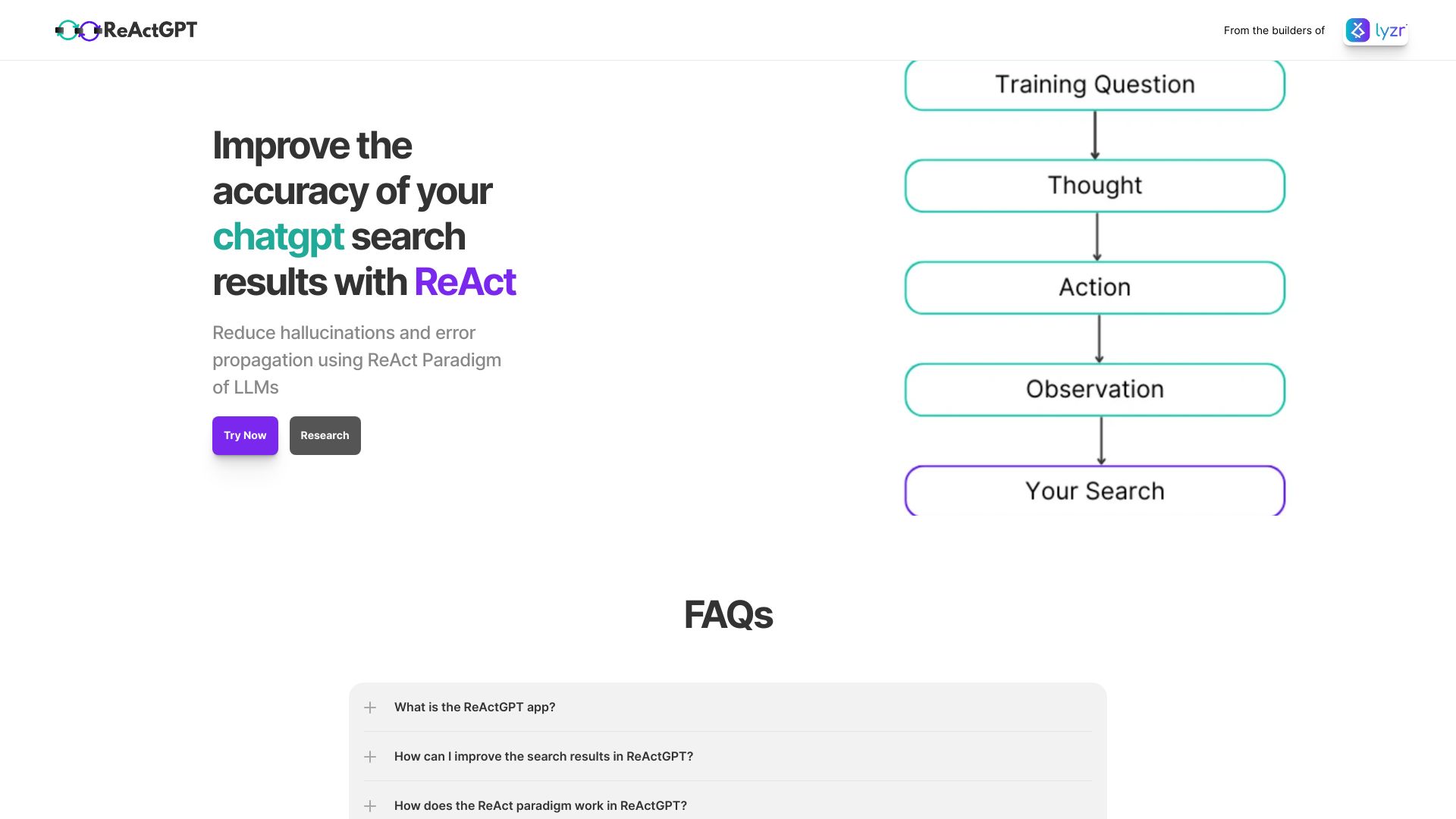ReActGPT revolutionizes AI interactions using the ReAct paradigm. It trains AI with thought-action-observation sequences for accurate and dynamic results, minimizing AI errors and optimizing outcomes. It aims to improve the accuracy of ChatGPT search results and reduce hallucinations and error propagation in large language models (LLMs).
What is ReActGPT?
How to use
Train your AI using thought-action-observation sequences within the ReActGPT framework to achieve more accurate and dynamic results. Use the platform to improve ChatGPT search results and reduce hallucinations.
Core Features
- Training AI with thought-action-observation sequences
- Improving ChatGPT search result accuracy
- Reducing hallucinations and error propagation in LLMs
Use Cases
- Improving the accuracy of search results in ChatGPT.
- Reducing hallucinations and error propagation in LLMs.
FAQ
What is the ReActGPT app?
ReActGPT is a platform that utilizes the ReAct paradigm to improve AI interactions and reduce errors in large language models.
How can I improve the search results in ReActGPT?
By training your AI using thought-action-observation sequences within the ReActGPT framework.
How does the ReAct paradigm work in ReActGPT?
The ReAct paradigm uses thought-action-observation sequences to enable AI to reason and act dynamically, leading to more accurate results.
How does ReActGPT ensure in lowering hallucination and error propagation?
By using the ReAct paradigm, which allows the AI to think, act, and observe, reducing the likelihood of hallucinations and error propagation.
Why should I use ReActGPT instead of traditional search engines?
ReActGPT focuses on improving the accuracy of AI interactions and reducing errors, particularly in the context of large language models, which is different from the goals of traditional search engines.
Pricing
Pros & Cons
Pros
- Improves AI accuracy through the ReAct paradigm
- Reduces hallucinations and error propagation
- Optimizes AI outcomes with thought-action-observation sequences
- Dynamic and accurate results
Cons
- May require understanding of the ReAct paradigm
- Limited information on specific implementation details
